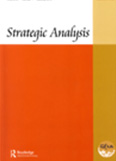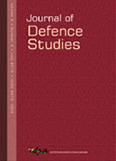India, Japan and Preservation of the Asian Territorial Order
Research Fellow, IDSA, Dr S Kalyanaraman’s article on India-Japan Strategic partnership to safeguard Asian Territorial Order, titled ‘India, Japan and Preservation of the Asian Territorial Order’ was published in E-International Relations on December 24, 2017.
- Published: 24 December, 2017













